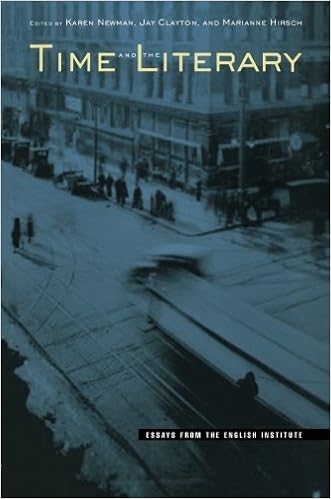
By Jay Clayton, Marianne Hirsch
Time and the literary: the immediacy of data expertise has supposedly annihilated either. electronic mail, cellphones, satellite tv for pc broadcasting appear to have ended the long-standing culture of encoding our event of time via writing. Paul de Man's seminal essay "Literary historical past and Literary Modernity" and newly commissioned essays on every thing from the human genome to grammatical tenses argue, even though that the literary consistently reconstructs our realizing of time. From eleventh-century France or a science-fiction destiny, Time and the Literary indicates how those innovations were and should proceed to persuade one another.
Read or Download Time and the Literary (Essays from the English Institute) PDF
Similar Essays Correspondence books
Letters, Fictions, Lives: Henry James and William Dean Howells
During this distinct and long-awaited quantity, Michael Anesko files the literary cross-fertilization among Henry James and William Dean Howells, gathering 151 letters, approximately the entire extant correspondence among the 2 males, in addition to the main major severe remark James wrote on Howells and Howells wrote on James.
Byron's Letters and Journals: A New Selection
Along Jane Austen, the Bronte sisters, and Oscar Wilde, Lord Byron possesses a star-quality in contrast to different vintage British authors. . His lifestyles as poet, philanderer, gay, and freedom fighter is known, and this new choice from his robust letters and journals tells the tale from the interior, in Byron's personal racy and passionate variety.
An Essay on the Art of Ingeniously Tormenting (Oxford World's Classics)
Wickedly humorous and bitingly satirical, The artwork is a comedy of manners that offers insights into eighteenth-century habit in addition to the undying artwork of emotional abuse. it's also an suggestion ebook, a instruction manual of anti-etiquette, and a comedy of manners. Collier describes equipment for "teasing and mortifying" one's intimates and associates in various social events.
Letters and Orations (The Other Voice in Early Modern Europe)
By means of the tip of the 15th century, Cassandra Fedele (1465-1558), a discovered middle-class lady of Venice, used to be arguably the main well-known girl author and pupil in Europe. A cultural icon in her personal time, she usually corresponded with the king of France, lords of Milan and Naples, the Borgia pope Alexander VI, or even maintained a ten-year epistolary trade with Queen Isabella and King Ferdinand of Spain that led to a call for participation for her to hitch their court docket.
Extra info for Time and the Literary (Essays from the English Institute)



